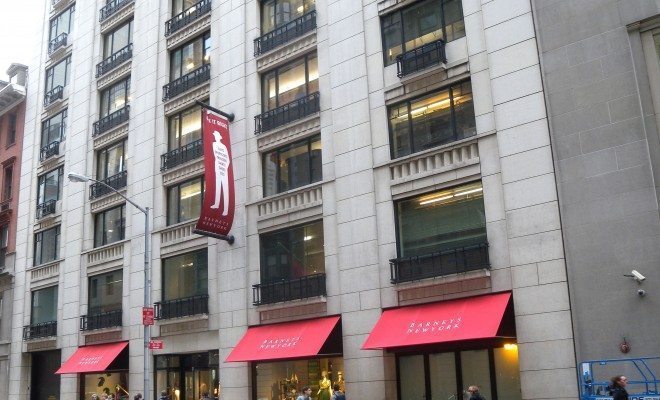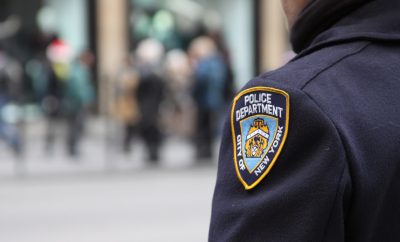
Blogs
Barneys Gets Busted: The Cost of Racial Profiling in Retail
On Monday, luxury department store Barneys New York made a $525,000 settlement in response to a racial profiling investigation by the State of New York. Nineteen-year-old Queens resident Trayon Christian used his savings to purchase a Salvatore Ferragamo belt at the Fifth Avenue store in Manhattan, only to be arrested shortly after leaving. The clerk who sold him the $350 belt had allegedly called the police claiming fraud. Apparently, the company has racial profiling ingrained into its employee policy. Security guards are told to watch minority customers in the store more closely than their white customers, and clerks are to prevent making sales to minority customers in order to avoid fraud investigations. The investigation also found that Barneys must have been collaborating with the NYPD by placing undercover detectives in their store.
These days, you can’t seem to look at the news without hearing about another unarmed black kid who was “accidentally” shot by police. Racial profiling is a not only a violation of human rights, but can also result in serious consequences for the innocent minority victim.
The police told Christian that his debit card must be a fake because a black man could never afford such an expensive item. He was then held at the police station for two hours until they realized that he was innocent. Christian, who is a student at the NYC College of Technology, had saved up to buy the belt because he wanted one like the Harlem rapper Juelz Santana. Lower class consumers are just as entitled as upper class ones to use their own money to buy a designer item, right? Isn’t such a notion the mere foundation of capitalism?

A belt similar to the one Trayon Christian purchased in April 2013. Thanks NY Post.
In luxury retail stores, customers are rarely asked for identification with their credit card because it is considered rude. Part of the luxury customer experience involves being treated well, because they are spending so much money. Also, the more accommodating a salesperson is to a customer, the more money the customer may spend in the store. The main purpose of a retail store is to put the customer’s needs first, as they are “always right.”
On the other hand, stores must also protect themselves with lost prevention (LP) policies. There are plenty of telltale signs that a person may be shoplifting, but being black or Latino is not one of them. Also if a customer is suspected of shoplifting, the salesperson is expected to provide even more service to deter them from stealing, as they are still technically considered a customer if they are in the store.
When I worked as a sales associate in a luxury mall, I went through intensive LP training, but race was never mentioned as any reason to be suspicious of customers. However, we were also constantly reminded that we were to be extra accommodating to customers as they were accustomed to a different level of service than in other malls. Wealthy customers were actually more inclined to try to get away with a quick buck than average ones. They almost expected us to make exceptions for them when it came to expired coupons or discounts they seemed to make up on their own. Shouldn’t that kind of behavior be seen as a bigger red flag when it comes to credit fraud?
Barneys’ claim that they are avoiding fraud investigations is completely invalid, as there are many other ways to prevent shoplifters. Perhaps they would save even more money if they taught their employees real lost prevention techniques, instead of taking shortcuts by racially profiling customers and outsourcing to the NYPD. A minority customer’s business should be just as valued as a white customer’s would be. Ultimately, the company lost even more money because they had to pay for a settlement. Christian also returned the belt shortly after his arrest because he no longer wanted to have anything to do with the company.
The battle is only halfway done, however, as there is a federal case that has yet to go to trial. Hopefully, the trial will result in further regulations in what stores can and cannot do as far as customer service and lost prevention policies. All customers, provided they are not trying to take advantage of the company, should be treated as equal opportunities to make a profit for both the salesperson and the company represented.
At the end of the day, a retail store must focus on making revenue and ensuring that customers will want to return for their services. Turning away a customer because of the color of their skin is ultimately bad business for everyone. Besides, as in Barneys’ case, what’s $350 in potential theft compared to over $500,000 in legal fines? That choice is ultimately up to the retailer.
—
Katherine Fabian (@kafernn) is a recent graduate of Fordham University’s College at Lincoln Center and is currently applying to law schools, freelance writing, and teaching yoga. She hopes to one day practice fashion law and defend the intellectual property rights of designers.
Featured image courtesy of [Jim.Henderson via WikiMedia Commons]








Comments